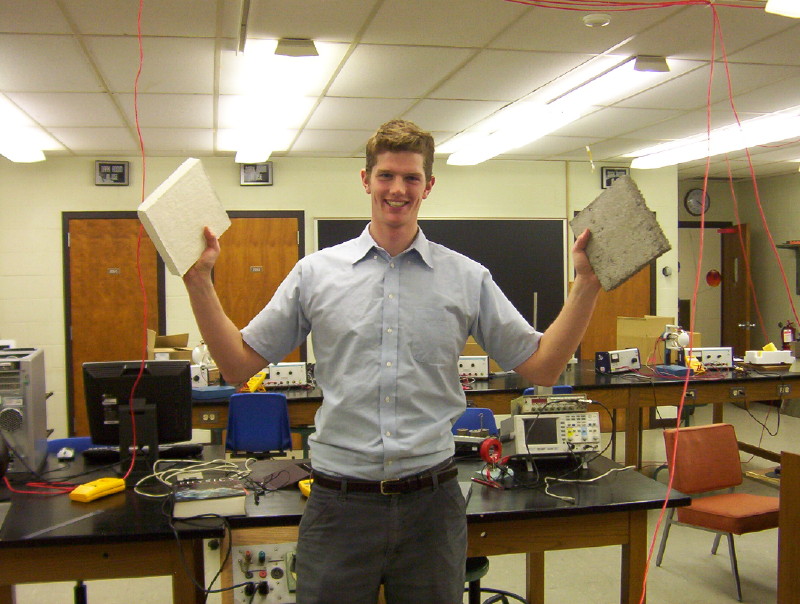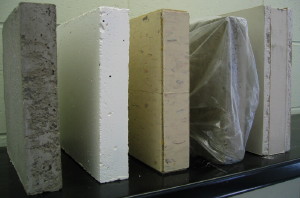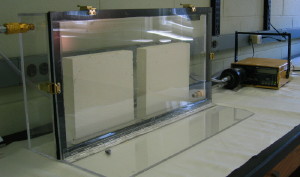


(L-R) Control, Painted, Linoleum, Plastic Bag, Sheetrock
Assessment of Covering Materials
for Mitigation of Radon from Concrete
Kit Wright '08
 |
|
| Kit shows off his concrete samples | |
 |
 |
| Concrete slabs with test materials: (L-R) Control, Painted, Linoleum, Plastic Bag, Sheetrock |
The airtight, Plexiglas test chamber used for testing |
Abstract:
Radioactive radon gas is emitted from concrete and enters indoor environments, causing a health hazard. I assessed the effectiveness of using different covering materials to prevent or reduce radon emission from concrete. Sample concrete slabs were made form Quikrete ready mix concrete and covered with linoleum tile, paint, and plastic sheeting. I measured the decays of radon in an enclosed space containing concrete slabs. In general, the addition of a covering material to a slab reduces the equilibrium level of radon in a closed space by about 50%, compared to uncovered slabs. It appears that an airtight barrier is a simple, yet effective solution. From my results I projected the radioactivity in a typical basement with poured concrete walls. The addition of covering materials to concrete dropped the activity levels to below the United States action level for this common type of room. Covering materials are an effective method for reducing radon levels and meeting national standards for radon in the indoor environment.
For more information, contact Dr. Karen Johnson:
Return To 2008 Senior Projects
|
|
||
| © | St. Lawrence University | Department of Physics |
| Revised: 14 May 2008 | Canton, NY 13617 |